Hoops Rumors’ up-to-date list of 2026 free agents is below. These are players who are eligible for restricted or unrestricted free agency after the 2025/26 season. The player’s 2026 age is in parentheses.
Players who are currently free agents or who are on our 2025 free agent list are not seen here. Players who have team or player options for the 2025/26 season aren’t listed below, but will be added to this list eventually if they remain on their current contracts.
Players with team or player options for the 2026/27 season are listed below, unless they’re still on their rookie scale contracts.
This list will be continually updated. You’ll be able to access it anytime under the “Hoops Rumors Features” menu on the right sidebar on our desktop site, or in the “Free Agent Lists” section of our mobile menu. If you have any corrections or omissions, please contact us.
Updated 10-23-24 (6:50am CT)
Unrestricted Free Agents
Point Guards
- Mike Conley (39)
- De’Aaron Fox (29)
- Terry Rozier (32)
- Marcus Smart (32)
- Gabe Vincent (30)
- Coby White (26)
Shooting Guards
- Jordan Clarkson (34)
- Ayo Dosunmu (26)
- A.J. Green (27)
- Kevin Huerter (28)
- CJ McCollum (35)
- Josh Okogie (28)
- Norman Powell (33)
- Collin Sexton (27)
- Anfernee Simons (27)
Small Forwards
- Mikal Bridges (30)
- Simone Fontecchio (31)
- Haywood Highsmith (30)
- Cody Martin (31)
- KJ Martin (25)
Power Forwards
- Harrison Barnes (34)
- Kevin Durant (38)
- Anthony Gill (34)
- Rui Hachimura (28)
- Tobias Harris (34)
- Jaren Jackson Jr. (27)
- Maxi Kleber (34)
- Kevin Love (38)
- Georges Niang (33)
- Dean Wade (30)
- P.J. Washington (28)
Centers
- Deandre Ayton (28)
- Zach Collins (29)
- Drew Eubanks (29)
- Daniel Gafford (28)
- Richaun Holmes (33)
- Jusuf Nurkic (32)
- Kelly Olynyk (35)
- Kristaps Porzingis (31)
- Paul Reed (27)
- Nick Richards (29)
- Mitchell Robinson (28)
- Xavier Tillman (27)
- Nikola Vucevic (36)
- Robert Williams (29)
Restricted Free Agents
Point Guards
- None
Shooting Guards
- Ochai Agbaji (26)
- Malaki Branham (23)
- Christian Braun (25)
- Dyson Daniels (23)
- Johnny Davis (24)
- Jaden Ivey (24)
- Wendell Moore (25)
- Shaedon Sharpe (23)
- Blake Wesley (23)
- Jalen Williams (25)
Small Forwards
- Patrick Baldwin (24)
- MarJon Beauchamp (26)
- Sidy Cissoko (22)
- Ousmane Dieng (23)
- Bennedict Mathurin (24)
- Keegan Murray (26)
- Dalen Terry (24)
- Peyton Watson (24)
Power Forwards
- Paolo Banchero (24)
- Tari Eason (25)
- Nikola Jovic (23)
- Jake LaRavia (25)
- David Roddy (25)
- Jabari Smith Jr. (23)
- Jeremy Sochan (23)
Centers
- Jalen Duren (23)
- Chet Holmgren (24)
- Walker Kessler (25)
- Duop Reath (30)
- Mark Williams (25)
Player Options
Point Guards
- Jose Alvarado (28) — $4,500,000 (Pelicans)
- Luka Doncic (27) — $48,967,380 (Mavericks)
- Damian Lillard (36) — $58,456,566 (Bucks)
- Trae Young (28) — $48,967,380 (Hawks)
Shooting Guards
- Bradley Beal (33) — $57,128,610 (Suns)
- Kentavious Caldwell-Pope (33) — $21,621,500 (Magic)
- Zach LaVine (31) — $48,967,380 (Bulls)
- Austin Reaves (28) — $14,898,786 (Lakers)
Small Forwards
- Andrew Wiggins (31) — $30,169,644 (Warriors)
Power Forwards
- Draymond Green (36) — $27,678,571 (Warriors)
Centers
- Jakob Poeltl (31) — $19,500,000 (Raptors)
Team Options
Point Guards
- Cole Anthony (26) — $13,100,000 (Magic)
- Craig Porter Jr. (26) — $2,406,205 (Cavaliers)
- Jamal Shead (24) — $2,296,271 (Raptors)
Shooting Guards
- Bogdan Bogdanovic (34) — $16,020,000 (Hawks)
- Ricky Council (25) — $2,406,205 (Sixers)
- Andre Jackson (25) — $2,406,205 (Bucks)
- Colby Jones (24) — $2,406,205 (Kings)
- Pelle Larsson (25) — $2,296,271 (Heat)
- Jalen Pickett (27) — $2,406,205 (Nuggets)
- Antonio Reeves (26) — $2,296,271 (Pelicans)
- Vince Williams (26) — $2,489,752 (Grizzlies)
Small Forwards
- Julian Champagnie (25) — $3,000,000 (Spurs)
- Luguentz Dort (27) — $17,722,222 (Thunder)
- Maxwell Lewis (24) — $2,406,205 (Lakers)
- Chris Livingston (23) — $2,406,205 (Bucks)
- Leonard Miller (23) — $2,406,205 (Timberwolves)
- Julian Phillips (23) — $2,406,205 (Bulls)
- Jordan Walsh (22) — $2,406,205 (Celtics)
- Kenrich Williams (32) — $7,163,000 (Thunder)
Power Forwards
- Toumani Camara (26) — $2,406,205 (Trail Blazers)
- Mouhamed Gueye (24) — $2,406,205 (Hawks)
- GG Jackson (22) — $2,406,205 (Grizzlies)
- Jonathan Mogbo (25) — $2,296,271 (Raptors)
- Hunter Tyson (26) — $2,406,205 (Nuggets)
Centers
- Isaiah Hartenstein (28) — $28,500,000 (Thunder)
- Trayce Jackson-Davis (26) — $2,406,205 (Warriors)
- Jock Landale (31) — $8,000,000 (Rockets)
- Karlo Matkovic (25) — $2,296,271 (Pelicans)
- Neemias Queta (27) — $2,667,944 (Celtics)
Two-Way Free Agents
Point Guards
- KJ Simpson (24)
Shooting Guards
- Alondes Williams (27)
Small Forwards
- Yongxi Cui (23)
Power Forwards
- None
Centers
- Ulrich Chomche (21)
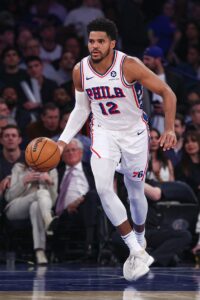
 Harris, Fontecchio, and Beasley aren’t going to turn Detroit into a playoff team, but they’ll help open up the floor for franchise player
Harris, Fontecchio, and Beasley aren’t going to turn Detroit into a playoff team, but they’ll help open up the floor for franchise player  By waiving and stretching Little now, the Suns will trim over $3.6MM from their 2024/25 cap, generating significant short-term savings in projected luxury tax penalties, since they’re operating so far into tax territory. However, Little will remain on their books through 2031 instead of 2027.
By waiving and stretching Little now, the Suns will trim over $3.6MM from their 2024/25 cap, generating significant short-term savings in projected luxury tax penalties, since they’re operating so far into tax territory. However, Little will remain on their books through 2031 instead of 2027.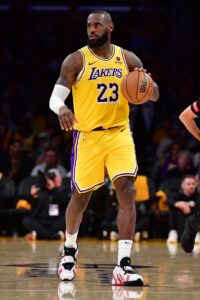
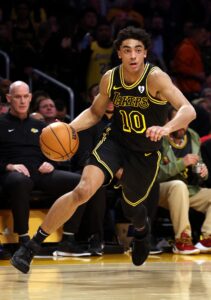 Ultimately, the Lakers appear likely to enter the 2024/25 season with a relatively similar roster to the one that finished the ’23/24 campaign. They’ll bet on internal improvement and will hope to get some contributions from their newly drafted rookies.
Ultimately, the Lakers appear likely to enter the 2024/25 season with a relatively similar roster to the one that finished the ’23/24 campaign. They’ll bet on internal improvement and will hope to get some contributions from their newly drafted rookies.
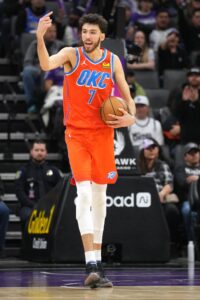
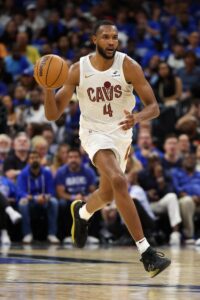 Signed
Signed 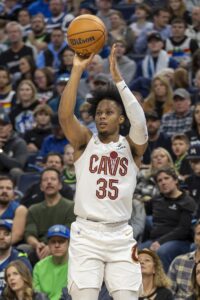 One of those two could be
One of those two could be 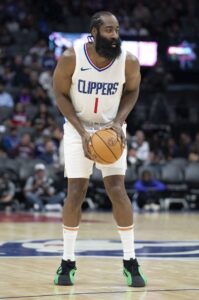
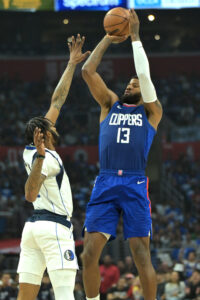 While the new second tax apron likely played a part in the Clippers’ decision to draw a hard line in their negotiations with George, the fact that the team had won just three total playoff games – and no playoff series – in the past three years presumably factored into that decision too.
While the new second tax apron likely played a part in the Clippers’ decision to draw a hard line in their negotiations with George, the fact that the team had won just three total playoff games – and no playoff series – in the past three years presumably factored into that decision too.